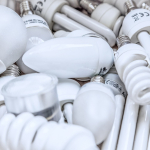As the chill of winter approaches, understanding the UK energy price cap 2025 becomes essential for consumers navigating the rising costs of heating and electricity. Recently, Ofgem confirmed that the cap for the period from October 1 to December 31, 2025, will set the average household bill at approximately £1,755, reflecting a 2% increase from the previous quarter. This change underscores the need for households to carefully consider their options, particularly when weighing the benefits of fixed vs variable energy tariffs. Additionally, with rising standing charges that can significantly impact monthly bills, consumers must adopt strategic thinking to optimize their energy expenditures. This post will unpack the implications of the latest Ofgem cap while offering a practical 10-step savings checklist designed to help households minimize their expenses and maximize their winter energy savings.
Understanding the UK Energy Price Cap 2025: What It Means for Consumers
The UK energy price cap 2025, set by Ofgem, marks a crucial point in energy pricing for millions of households. From October 1 to December 31, 2025, the cap increases by 2%, bringing the average household’s annual energy bill to approximately £1,755. This figure signifies not just the total amount spent on energy but rather the maximum price that suppliers can charge per unit of electricity and gas for customers on default tariffs—those not enrolled in fixed contracts.
To break it down further, the Ofgem cap regulates both the unit price and the standing charge, which is a fixed daily fee that all consumers pay, irrespective of their energy usage. Understanding this structure is essential for consumers, as it allows them to make informed decisions about their energy consumption and spending.
Currently, fixed tariffs could offer stability against ongoing price fluctuations, as they are not directly impacted by the cap changes. As rising costs comprise a significant component of the latest cap—especially with the standing charges for gas rising about 14% and electricity by 4.5%—those primarily using energy for heating during the colder months could feel the pinch more acutely.
The current energy landscape suggests that consumers could benefit from reassessing their tariff options. With some variable rates set to exceed the price cap, exploring fixed contracts might save them from paying considerably higher amounts. Therefore, consumers are encouraged to evaluate their current energy arrangements and consider making a switch to ensure they are not left vulnerable during the winter months when energy usage typically peaks, and costs soar.

Fixed vs Variable Energy Tariffs: Making the Right Choice
When it comes to managing energy costs, understanding the difference between fixed vs variable tariffs is crucial. With the recent announcement by Ofgem regarding the UK energy price cap 2025, consumers must carefully evaluate their options to optimize savings.
Fixed Tariffs offer a stable price per unit of energy for a set duration, typically ranging from 12 to 24 months. This means that regardless of market fluctuations, your rate stays the same. With the upcoming cap set at approximately £1,755 for Q4, opting for a fixed tariff can provide significant protection against rising costs. In fact, many fixed-rate deals currently available are around 15-17% cheaper than the newly adjusted price cap, potentially saving consumers upwards of £200 annually. This certainty can be particularly beneficial during the high-demand winter months when energy prices usually soar.
On the other hand, Variable Tariffs, including standard variable tariffs, fluctuate based on market conditions, closely linked to the Ofgem cap. This means that while they can offer lower rates in the short term, consumers are exposed to potential increases when energy prices rise. In light of the recent 2% increase in the energy price cap, households on variable tariffs may face higher bills as winter approaches. Furthermore, those with lower energy usage might find that rising standing charges disproportionately affect their overall costs.
Here’s a concise comparison of fixed and variable tariffs to aid in decision-making:
| Factor | Fixed Tariff | Variable Tariff |
|---|---|---|
| Price Stability | Fixed for the duration of the contract | Fluctuates with market conditions |
| Predictability | Predictable costs for budgeting | Uncertain costs, harder to budget |
| Initial Savings | Usually higher rates, but predict savings | Lower initial costs, but potential increases |
| Long-Term Protection | Offers protection against future price hikes | Risk of higher bills during peak times |
To maximize savings and safeguard against unpredictable increases, opting for a fixed tariff may align better with households’ financial strategies, especially in light of the standing charge increases that accompany market instability. By choosing a suitable tariff now, before the winter sets in, consumers can keep their energy costs manageable while benefiting from price certainty.
10-Step Savings Checklist to Reduce Your Winter Energy Costs
As the UK energy price cap 2025 rises, households need practical strategies to mitigate the impact of increased energy bills. Here’s a useful checklist to help consumers optimize their energy savings this winter:
- Review Your Tariff: Check if you’re on a fixed or variable tariff. Switching from a variable to a fixed tariff can offer steadier rates and potentially significant savings as the price cap rises.
- Understand Standing Charges: The standing charge has increased for both gas and electricity. Being aware of these costs can help you adjust your energy usage habitually.
- Monitor Your Usage: Implement a smart meter or regularly check your readings to gauge how much energy you are consuming. This can help pinpoint high-usage patterns.
- Set Thermostat Wisely: Lowering your thermostat by just 1°C can reduce heating costs significantly, especially during the cold winter months.
- Seal Drafts: Invest in draft-proofing windows and doors to keep the warm air in and the cold air out. Draught-proofing saves energy and enhances comfort.
- Energy-Efficient Appliances: Upgrade to energy-efficient appliances gradually. Look for A-rated models; they consume less energy over time, effectively reducing bills.
- Consider Time-of-Use Tariffs: If your energy provider offers time-of-use tariffs, using more power during off-peak hours can substantially cut costs.
- Leverage Insulation: Proper insulation keeps homes warmer for longer. Insulate lofts and walls to minimize heat loss and lower energy requirements.
- Use Energy-Saving Modes: Many appliances come with energy-saving features. Activate these settings to decrease power consumption.
- Stay Informed on Support Programs: Make sure to check eligibility for government programs such as the Warm Home Discount, beneficial for low-income households and can help alleviate high winter bills.
By following this 10-step savings checklist, consumers can strategically manage their energy consumption and reduce their winter energy costs, even as the Ofgem cap increases. Implementing these tips not only helps in saving money but also contributes to a broader effort of reducing energy consumption across the UK.
Frequently Asked Questions
What is the new energy price cap announced by Ofgem for Q4 2025?
Ofgem has announced a 2% increase in the energy price cap for the fourth quarter of 2025, which will take effect from 1 October 2025. This adjustment raises the average dual-fuel household bill to approximately £1,755 per year, which translates to about £2.93 more per month compared to the current cap. The rise is primarily attributed to increased network and policy costs, which are essential for maintaining a stable power supply and supporting customers facing fuel poverty.
How can households reduce their energy bills with the new price cap in effect?
Households can take several actionable steps to mitigate the impact of the new energy price cap on their bills. First, consumers are encouraged to consider switching to fixed tariff options, which could lead to savings of over £200 annually compared to the new cap. Additionally, changing payment methods, such as opting for Direct Debit, can yield further savings. Households should also explore energy efficiency measures, such as improving insulation, using energy-efficient appliances, and reducing overall energy consumption, to lower their bills during the winter months.
What are the implications of the rising standing charges for households on standard variable tariffs?
The recent increase in the energy price cap reflects a notable rise in standing charges, which affect households on standard variable tariffs disproportionately. With a standing charge increase of 14.1% for gas and 4.5% for electricity, lower users may find themselves paying a significant amount solely for being connected to the energy supply, irrespective of their actual consumption. This change is particularly concerning for households with lower energy needs, as they could face higher relative costs, prompting calls for energy companies to introduce low or zero-standing charge tariff options.
What assistance is available for consumers struggling to pay their energy bills?
Consumers facing difficulties in paying their energy bills can access various support schemes. Ofgem has mandated energy suppliers to provide flexible repayment plans tailored to individual circumstances and emergency credit options for those at risk of self-disconnection. Additionally, the Warm Home Discount scheme, which provides £150 off winter bills for eligible households on means-tested benefits, has been expanded, thus offering essential financial relief. Households are encouraged to reach out to their energy suppliers to discuss available support and assistance.














Comments are closed.